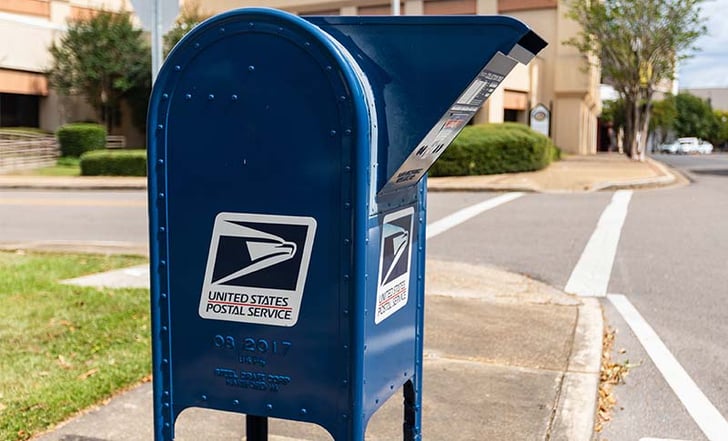A Simple Solution to the Evolving Check Fraud Threat
One of the biggest evolving fraud threats to your business is decidedly old school and has nothing to do with the internet. Check fraud is back.
2 min read

Tammy Gilmer Comeaux
April 5, 2022 |
Most fraud warnings directed at business owners these days relate to cyber attacks. Indeed, scams like business email compromise and ransomware are a growing concern. But did you know that one of the biggest continuing fraud threats to your business is much more old school — and it could be happening down the block at that blue Postal Service box where you mail your bill payments?
Yes, I’m talking about check fraud. It never went away, and because of advancements in security measures to combat card and cyber fraud, many fraudsters are returning to it.
Let’s look at one of the latest trends in check fraud and how the bank can help protect your company’s checking account.

Blue-box mail theft
If you haven’t heard about the rising frequency of this crime, just type “blue box check fraud” into your browser. You can read stories about it happening around the country. In a nutshell, fraudsters are getting their hands on master keys to Postal Service boxes and stealing mail, including bill-payment checks. Once the criminals have stolen your check, they can pursue two traditional and simple-to-perform types of check fraud:
Altering checks
A scammer can alter information on a stolen check, such as the recipient's name and amount, and then deposit a higher-dollar version of the item into their own account. Even amateurish efforts are often successful.
Counterfeiting
The bad guys can also use information on the stolen check — the authorized signature, account number, and routing and transit numbers — to produce and cash counterfeit checks that look just like your organization’s. When the criminals have your stolen check as a model, today’s technology makes printing a slew of look-alike counterfeit checks easier than ever.
Positive pay to the rescue
The banking industry is seeing a significant uptick in both altered check and counterfeit check fraud. The good news is that an easy-to-adopt bank reconciliation service, positive pay, has been proven over the years to be an effective defense against both.
An organization using positive pay transmits a file of check issuance information to its bank each day it issues checks. The file reports the check numbers, amounts and, depending on the service, potentially even the payee names. When each check is presented for payment, the bank compares it against the check issuance file. When there are any discrepancies between the presented check and what’s in the check issuance file, an image of the suspect check is referred to the client for a pay or return decision.
Hancock Whitney clients can decision positive pay items from any location using their mobile phones.
When an organization faithfully submits check issuance files to the bank on a timely basis, potential fraud losses can be significantly reduced.
Don’t go to sleep on check fraud
According to results of the 2021 Association for Financial Professionals (AFP) Payments Fraud and Control Survey, checks continue to be the payment method most impacted by fraud, with about two-thirds of respondents reporting check fraud activity against their accounts. Thus, while cyber fraud continues to dominate the headlines, business owners are wise not to neglect check fraud prevention.
When you think about what a major check fraud attack could cost your business — thousands or even tens of thousands of dollars — it just makes sense to take advantage of an easy-to-implement and effective solution. In addition to thwarting actual fraud attempts, using positive pay can send a message that your business is well protected, likely reducing future exposure to fraudsters.
Talk to your banker about how you can customize positive pay to meet the check fraud prevention needs of your business — and give you the control and security that will allow you to sleep better at night.
Explore more Insights
Get financial insights delivered to your inbox
Sign up to receive regular updates from our team of experts.









